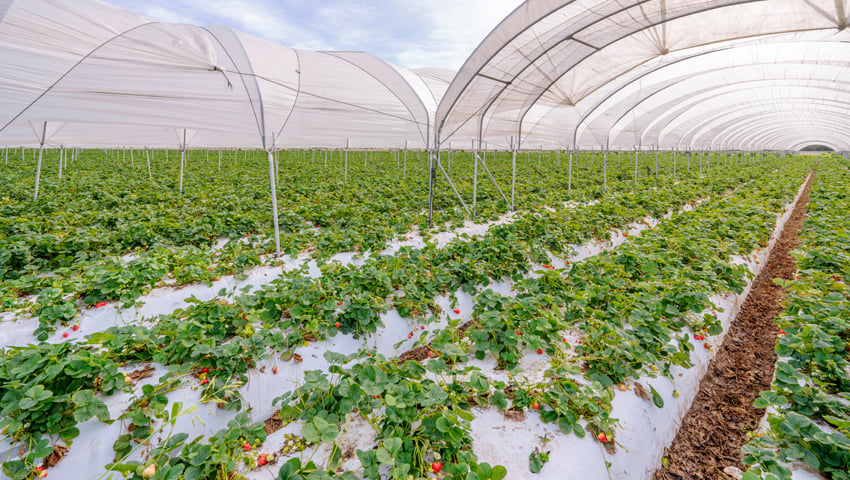A study by PAN Europe and its members reveals that European citizens are increasingly exposed to cocktails of PFAS pesticides through their food.
This subgroup of “forever chemicals” are sprayed on food crops, making fresh fruit and vegetables a direct and systematic route of exposure for consumers.
PAN Europe says that key insights of their study include:
- Residues of 31 different PFAS pesticides were detected in fruit and vegetables in the EU between 2011 and 2021
- The number of fruit and vegetables containing residues of at least one PFAS pesticide in the EU has tripled in 10 years
- In 2021, European-grown fruits such as strawberries (37%), peaches (35%) and apricots (31%) were particularly contaminated, often containing cocktails of three to four different PFAS in a single fruit
- The Netherlands, Belgium, Austria, Spain, Portugal and Greece are the leader producers of PFAS-contaminated food within the EU, while countries such as Costa Rica, India and South Africa are for the EU the main exporters of high-PFAS laden food.
Per- and polyfluoroalkyl substances or PFAS, known as “forever chemicals” because of their exceptional persistence, stand among the greatest chemical risks nowadays, for humans and the environment. They pollute water resources and accumulate in soils, food crops and living organisms, including humans.
The limited evidence available indicates a range of human health and environmental effects linked to exposure. The PAN Europe report shows that European agriculture contributes to this PFAS legacy. PFAS have been either deliberately introduced into pesticide products with the addition of a few fluorine atoms to increase their effectiveness, or result as breakdown byproducts, such as the water pollutant trifluoroacetic acid (TFA).
Farmers are generally unaware that they are spraying “forever pesticides” on their crops, as this information is not explained on the label.
Salomé Roynel, Policy Officer at PAN Europe, said, “Our study reveals a chronic and widespread exposure of European consumers to cocktails of PFAS pesticides in fruit and vegetables. When zooming in on the most detected PFAS pesticides, evidence about their persistence and their toxicity to human health is already well documented, including risks to unborn children, brain damage, disruption of the endocrine system and cancer. Moreover, the impact of pesticide mixtures is simply not investigated.”
The fact that most residues detected in the PAN Europe study were under the Maximum Residue Limits (MRLs) does not clear the concerns. Although required by law, MRLs for pesticides are set without assessing the cocktail effects arising from a combined exposure to several chemical substances. This lack of consideration for the overall level of exposure of consumers to chemicals means that MRLs are set too high, underestimating the risks, particularly from persistent pesticides such as PFAS.
Roynel said, “PFAS pesticides are absolutely not necessary to grow crops. They are an easily avoidable source of PFAS pollution. Maintaining PFAS pesticide approvals in the EU leads to the intentional exposure of citizens to PFAS residues day after day, despite the calls from the medical community for a complete phase-out.”
In 2020, the EU pledged to ban all unnecessary PFAS in Europe, but PFAS pesticides were left out of the proposal on the false assumption that they are already sufficiently regulated under the EU Pesticides Law. PAN Europe says that their recently published investigation reveals a different story.
